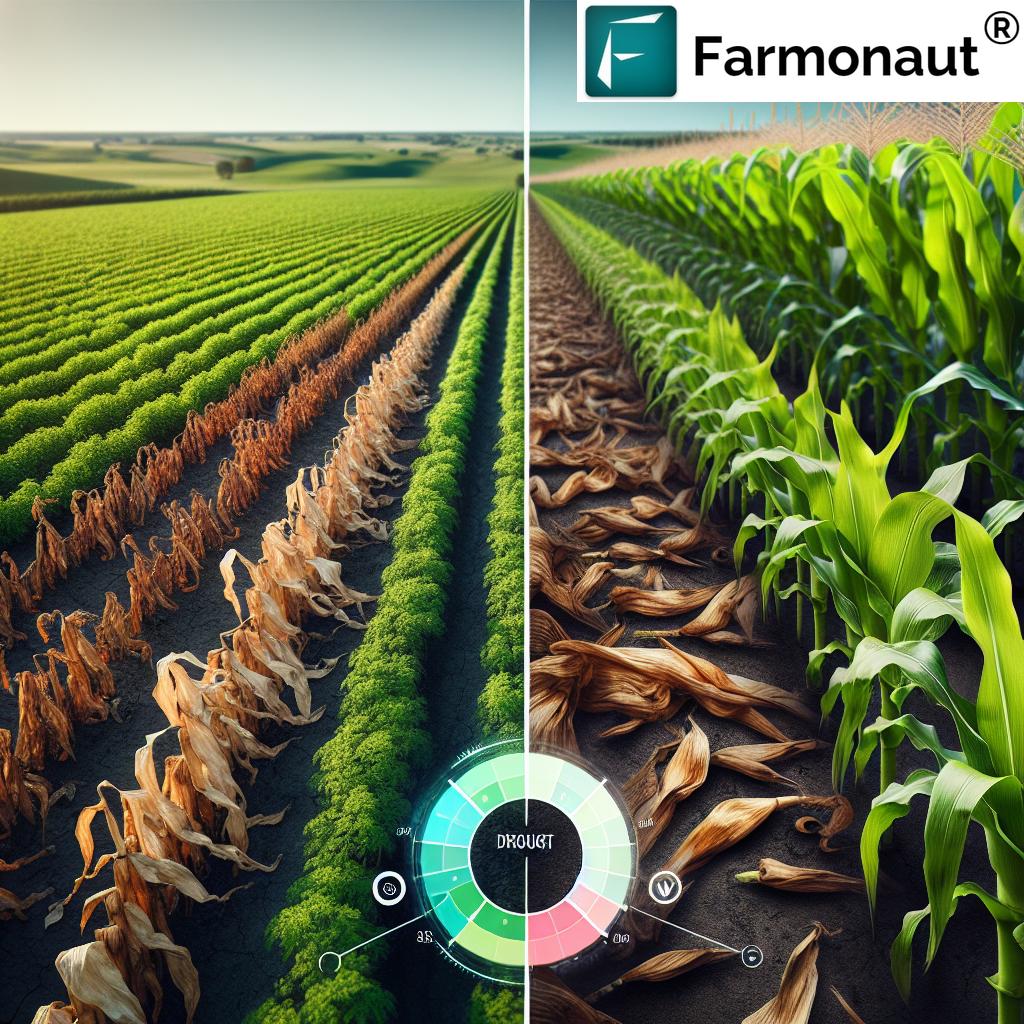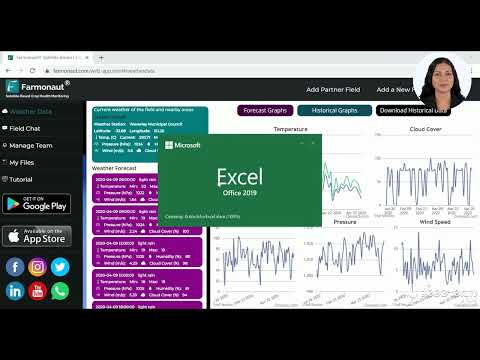Mastering Drought-Resilient Corn: 5 Essential Strategies for Iowa Farmers to Maximize Yield and Sustainability
“Over 50% of U.S. farmers are facing moderate to severe drought conditions this corn season.”
As Iowa farmers, we understand the critical importance of adapting to challenging environmental conditions, particularly when it comes to drought stress in corn production. With climate change intensifying weather patterns, mastering drought-resilient corn cultivation has become more crucial than ever. In this comprehensive guide, we’ll explore five essential strategies that can help us maximize yield and sustainability in the face of drought conditions.
Understanding Drought Impact on Corn
Before diving into management strategies, it’s essential to understand how drought affects corn at different growth stages. Drought stress can severely impact corn yields, with effects varying depending on the plant’s development phase.

Let’s break down the impact of drought on corn at various growth stages:
| Growth Stage | Drought Impact | Management Strategy | Yield Impact | Farmonaut Tool Application |
|---|---|---|---|---|
| Seedling | Reduced emergence, poor stand establishment | Adjust planting depth, use drought-tolerant hybrids | 10-15% loss | Soil Moisture Monitoring |
| Vegetative | Stunted growth, reduced leaf area | Implement conservation tillage, optimize irrigation | 15-25% loss | NDVI Analysis |
| Tasseling | Poor pollination, reduced kernel set | Prioritize irrigation, foliar nutrient application | 30-50% loss | Weather Forecasting |
| Grain Fill | Reduced kernel weight, premature black layer formation | Maintain soil moisture, adjust fertility program | 20-35% loss | Crop Health Monitoring |
| Maturity | Early senescence, reduced overall yield | Timely harvest, post-harvest soil management | 10-20% loss | Yield Estimation |
Understanding these impacts helps us tailor our management strategies to each growth stage, maximizing our chances of a successful harvest despite drought conditions.
Strategy 1: Implement Advanced Soil Moisture Conservation Techniques
One of the most critical aspects of drought management in corn production is conserving soil moisture. By implementing advanced soil moisture conservation techniques, we can significantly improve our corn’s resilience to drought stress.
- Conservation Tillage: Reducing tillage or implementing no-till practices can help retain soil moisture by minimizing evaporation and improving soil structure.
- Cover Crops: Planting cover crops during the off-season can improve soil organic matter, enhance water infiltration, and reduce runoff.
- Mulching: Applying organic mulch around corn plants can help reduce evaporation and maintain consistent soil moisture levels.
To effectively implement these techniques, we can leverage Farmonaut’s precision agriculture tools. The Farmonaut app provides real-time soil moisture data, allowing us to make informed decisions about irrigation and soil management practices.
Strategy 2: Select and Plant Drought-Resistant Corn Hybrids
“Drought-tolerant corn hybrids have shown significant improvements in yield protection over the past decade.”
Choosing the right corn hybrid is crucial for maximizing yield potential under drought conditions. Over the years, significant advancements have been made in developing drought-resistant corn hybrids that can better withstand water stress.
- Research Hybrid Performance: Look for hybrids that have demonstrated good performance under drought conditions in your specific region.
- Consider Root Structure: Hybrids with deeper, more extensive root systems are often better equipped to access soil moisture during dry periods.
- Evaluate Stress Tolerance Traits: Some hybrids are bred for specific stress tolerance traits, such as improved water use efficiency or heat tolerance.
Farmonaut’s digital tools can assist in hybrid selection by providing historical weather data and crop performance analytics for your specific location. This information can be invaluable when choosing the most suitable drought-resistant corn hybrids for your farm.
Strategy 3: Optimize Nutrient Management During Drought
Proper nutrient management is critical for maintaining corn health and productivity during drought conditions. Drought stress can significantly impact nutrient uptake and utilization, making it essential to adjust our fertilization strategies accordingly.
- Soil Testing: Regular soil testing helps determine the current nutrient status and guides fertilizer applications.
- Split Applications: Dividing fertilizer applications can improve nutrient use efficiency and reduce the risk of nutrient loss during drought.
- Focus on Potassium: Adequate potassium levels can improve water use efficiency and drought tolerance in corn.
Farmonaut’s precision agriculture platform offers valuable insights for optimizing nutrient management. By analyzing satellite imagery and soil data, we can create targeted fertilization plans that account for spatial variability within our fields.

Strategy 4: Implement Efficient Irrigation Practices
While not all Iowa farmers have access to irrigation systems, those who do can significantly mitigate the effects of drought through efficient water management. Implementing smart irrigation practices can help conserve water while ensuring optimal crop growth.
- Drip Irrigation: This method delivers water directly to the plant roots, minimizing evaporation and runoff.
- Deficit Irrigation: Strategically reducing irrigation during less sensitive growth stages can improve water use efficiency without significantly impacting yield.
- Irrigation Scheduling: Use soil moisture sensors and weather data to determine the optimal timing and amount of irrigation.
Farmonaut’s satellite-based crop health monitoring system can be a valuable tool for irrigation management. By providing real-time data on crop water stress, we can make informed decisions about when and where to irrigate, optimizing water use efficiency.
Strategy 5: Develop a Proactive Drought Management Plan
Being prepared for drought conditions before they occur is crucial for minimizing yield losses. Developing a comprehensive drought management plan can help us respond quickly and effectively when water stress becomes an issue.
- Monitor Weather Patterns: Stay informed about long-term weather forecasts and drought predictions for your region.
- Establish Trigger Points: Define specific soil moisture or crop stress levels that will trigger drought management actions.
- Prepare Alternative Strategies: Consider options such as early harvest for silage or alternative crop rotations in case of severe drought.
Farmonaut’s advanced weather forecasting and crop monitoring tools can play a crucial role in our proactive drought management strategy. By providing early warnings of potential drought conditions, we can take timely action to protect our corn crops.
Leveraging Precision Agriculture for Drought Management
Precision agriculture technologies, such as those offered by Farmonaut, can significantly enhance our ability to manage drought stress in corn production. These tools provide valuable data and insights that allow us to make more informed decisions about crop management.
- Satellite Imagery: Regular satellite images can help us identify areas of water stress before they become visible to the naked eye.
- AI-Powered Crop Monitoring: Advanced algorithms can analyze satellite data to provide early warnings of drought stress and recommend management actions.
- Yield Prediction: By combining historical data with current crop conditions, we can estimate potential yield impacts and adjust our management strategies accordingly.
To access these powerful tools, consider exploring Farmonaut’s mobile and web applications:
The Future of Drought-Resilient Corn Production
As we look to the future, continued advancements in genetics, agronomic practices, and precision agriculture technologies will play a crucial role in improving corn’s resilience to drought stress. By staying informed about the latest research and innovations, we can continually refine our drought management strategies.
- Genetic Advancements: Ongoing research into drought-tolerant traits and gene editing techniques holds promise for developing even more resilient corn varieties.
- Climate-Smart Agriculture: Integrating climate data and predictive models into our farming practices can help us better prepare for and adapt to changing weather patterns.
- Precision Irrigation: Emerging technologies like sensor-based variable rate irrigation systems can further optimize water use efficiency in corn production.
By embracing these advancements and continuously improving our drought management strategies, we can ensure the sustainability and productivity of our corn farms in the face of increasingly challenging environmental conditions.
Conclusion
Mastering drought-resilient corn production is an ongoing process that requires a combination of strategic planning, advanced technologies, and adaptive management practices. By implementing the five essential strategies outlined in this guide – soil moisture conservation, selecting drought-resistant hybrids, optimizing nutrient management, efficient irrigation, and proactive planning – Iowa farmers can significantly improve their corn crops’ resilience to drought stress.
Remember, the key to success lies in staying informed, leveraging precision agriculture tools like those offered by Farmonaut, and continuously adapting our practices to meet the challenges posed by changing climate conditions. By doing so, we can not only protect our yields but also contribute to the long-term sustainability of corn production in Iowa and beyond.
For more information on how Farmonaut’s precision agriculture tools can support your drought management efforts, visit our API Developer Docs or explore our API for custom integration options.
Frequently Asked Questions (FAQ)
- What is the most critical growth stage for corn in terms of drought sensitivity?
The tasseling and silking stages are typically the most sensitive to drought stress, with potential yield losses of 30-50% if severe water stress occurs during this period. - How can I determine if my corn is experiencing drought stress?
Early signs of drought stress in corn include leaf rolling, delayed silk emergence, and premature leaf senescence. Farmonaut’s crop health monitoring tools can help detect these signs before they become visually apparent. - Are drought-tolerant corn hybrids worth the investment?
Yes, drought-tolerant hybrids have shown significant yield advantages under water-limited conditions. While they may have a higher upfront cost, the potential yield protection they offer can provide a good return on investment, especially in areas prone to drought. - How can precision agriculture tools help with drought management?
Precision agriculture tools like those offered by Farmonaut provide real-time data on crop health, soil moisture, and weather conditions. This information allows farmers to make more informed decisions about irrigation, fertilization, and other management practices, optimizing resource use and potentially mitigating drought impacts. - What role does soil health play in drought resilience?
Healthy soils with high organic matter content and good structure can retain more water and provide better conditions for root growth. Implementing practices that improve soil health, such as reduced tillage and cover cropping, can enhance your corn crop’s resilience to drought stress.






